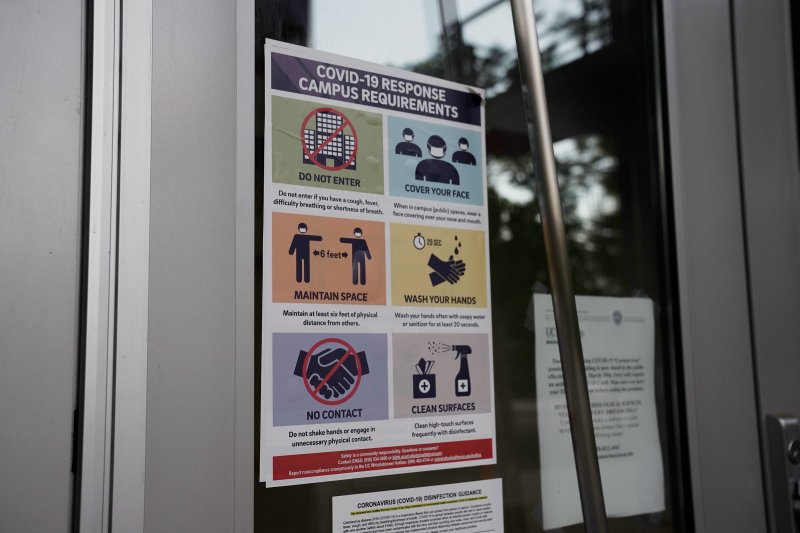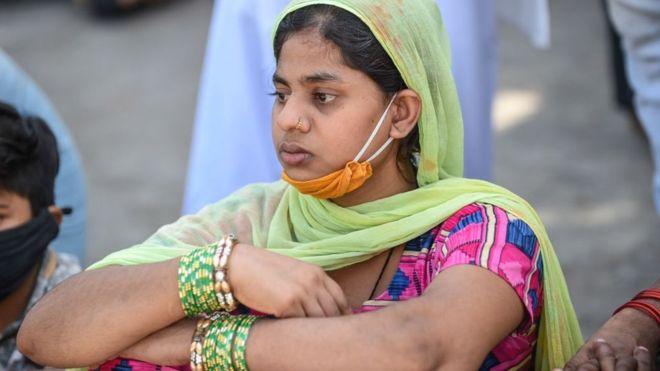
China Is Done Biding Its Time The End of Beijing’s Foreign Policy Restraint? .......... as COVID-19 has ravaged the globe, Chinese President Xi Jinping has appeared to defy many of his country’s long-held foreign policy principles all at once. ........... It has tightened its grip over Hong Kong, ratcheted up tensions in the South China Sea, unleashed a diplomatic pressure campaign against Australia, used fatal force in a border dispute with India, and grown more vocal in its criticism of Western liberal democracies. ........... The world may be getting a first sense of what a truly assertive Chinese foreign policy looks like. ........... “If someone claims that China’s exports are toxic, then stop wearing China-made masks and protective gowns, or using China-exported ventilators,” a foreign ministry spokesperson tweeted after China was found to have delivered substandard medical supplies to several European countries. ........... Over the past few months, it has upped the ante in nearly all of its many territorial disputes and even provoked new ones, in another departure from past practice. ............ Since March, China has stepped up its patrols near the Diaoyu Islands (known in Japan as the Senkaku Islands) in the East China Sea and doubled down on its maritime claims in the South China Sea, sending vessels to linger off the coasts of Indonesia, Malaysia, and Vietnam. It has conducted aerial reconnaissance near Taiwan, effectively ended Hong Kong’s semiautonomous status, ginned up a new border dispute with Bhutan, and by all appearances, provoked a deadly border clash with India in what was the People’s Liberation Army’s first use of force abroad in 30 years. Any one of these moves by Beijing might have been unsurprising on its own. Put together, however, they amount to a highly unusual full-court press. ............... In the western province of Xinjiang, a government crackdown on the Muslim Uighur minority, initiated before the pandemic hit, has since turned into a campaign of ethnic cleansing. Meanwhile, a controversial new national security law has all but stripped Hong Kong of its unique legal status. The law contains provisions that could potentially transcend national boundaries and extend Chinese jurisprudence globally, marking a shift from China’s traditionally defensive conception of sovereignty to a more offensive approach to extend Beijing’s authority. ................ in June, the National People’s Congress announced its sweeping new national security law for Hong Kong. But the global chorus of condemnation that followed the announcement did not keep the CCP from implementing the new law with zeal ............ In this new Chinese foreign policy, there are few U-turns and no posted speed limits. ........... Xi is rumored to be making many of the most important decisions himself, without even a trusted cohort of advisers. This may help explain why China’s foreign policy has become less risk averse: with fewer voices pitching in, an undaunted Xi may have no one to dissuade him from pressing ahead. ........ Xi is taking advantage of the United States’ stunning abdication of global leadership in a moment of crisis to advance his interests on many fronts. His imperious coronavirus diplomacy is just the latest instance of China’s long-standing tradition of foreign policy opportunism and improvisation—only scaled up to fit the gaping hole left by the United States. ............... his belief that China’s geopolitical moment has arrived. ........... Familiar or not, Beijing’s bristling crisis diplomacy is costing it in novel and lasting ways. .......... By leaving a power vacuum in the world’s darkest hour, the United States has bequeathed China ample room to overreach—and to demonstrate that it is unqualified for a position of sole global leadership. If Washington does not return soon, however, it may not much matter how the world views China’s bumptious diplomacy—left with no alternative, strident excess will fill the void.
The world loves the US dollar. Trump and the pandemic could change that "We expect the US dollar to follow a path of reduced dominance and weaken over the long term" .......... As US caseloads spiral out of control, many states are reimposing strict lockdown measures, threatening the fragile recovery that started in April. In California, which boasts the fifth largest economy in the world, Gov. Gavin Newsom on Monday shut indoor seating at restaurants, movie theaters, zoos, museums and bars. At least 27 states have now put a hold on reopening businesses or reimposed measures aimed at slowing the spread of the virus. "The US has reopened too early, as you can see" ............. The US government is ramping up borrowing to fund massive stimulus programs to prop up the economy. ........ Other developed economies are borrowing way more, too. But in the United States, the government is issuing debt faster than the Federal Reserve is buying it. That means there are more US Treasuries in the market, which hangs over the value of the dollar ............. There are reasons to be cautious. The decline of the US dollar has been predicted on many occasions, and it's always been premature. ........ the dollar could lose up to 20% of its value over the next five years. ....... China, where the desire to increase global use of the renminbi is strong.
After Cruise Ships and Nursing Homes, Will Universities Be the Next COVID-19 Tinderboxes? Clusters of infection have been traced to college town bars popular with students. ......... A common misconception is that young people with COVID-19 don’t die and therefore college re-openings pose little risk. Sadly, this isn’t the case. COVID-19 deaths in the young are rare, but they happen. ......... One might imagine that the rapid, uncontained spread of a serious and poorly understood disease which is already killing students would cause universities all across America to put their re-opening plans on hold. Unfortunately, that’s not the case. ............ 60% are “going to open for business and bring all of their students back.” .......... this could be the largest-scale uncontrolled public health experiment America has ever undertaken, with students, staff, faculty, parents, and communities as the unwitting test subjects. No other nation has reopened schools and universities with the level of rampant community transmission we see in the U.S. today, or with so little coordination or guidance as to protective measures. ........... Safety measures proposed so far revolve around sanitation, masks, and physical distancing. These might be sufficient for a trip to the supermarket; for several reasons, they are likely to fail in the context of daily life at a university. ........... evidence suggests that when students and instructors spend extended time together in the classroom, even universal mask use and six feet of distancing may not be enough. .............. We now know that SARS-Cov-2, the virus that causes COVID-19, can linger in the air in the form of tiny droplets (aerosols) and can infect people as they breathe in. ............ In the absence of constant and efficient ventilation, viral particles can remain airborne for at least 3 hours. In most universities, opening all the windows and doors would be impractical or impossible, and air conditioning systems can waft recycled air over occupants for hours. .............. Beyond the classroom, colleges and universities are “congregate settings” that are known to create high risk for viral transmission, akin to nursing homes or cruise ships. The campus experience includes bringing students together in dormitories, dining halls, athletic training, parties, bars and clubs—gatherings that would risk becoming “superspreading events.” ............. The overarching message seems to be that just telling students not to do things and leaving it at that is not a reliable policy. ............ Even if they recover from the initial acute illness, infection with the novel coronavirus can have debilitating long-term consequences, including lung disease, heart problems, brain damage, and mental health problems. And we don’t yet know what other lingering effects the disease might have. ........... The highest risk of death will be among service and maintenance staff on campus—cleaners, bus drivers, food service employees, janitors, facilities managers and support staff—who wield little institutional power. .............. For the city where a campus is based, reopening will be like dropping a cruise ship into the center of town—and giving passengers free rein. Campus outbreaks cannot be hermetically sealed—they will inevitably cause a spike in community spread, affecting the city, state, and beyond. ........... Rather than leaving individual universities to piece together their own plans, Taiwan’s Ministry of Education produced a national strategy for college campuses. The strategy included an initial quarantine, frequent testing of all students, sanitation, masks, distancing, reduction of student density, cleaning of dorms twice daily with bleach, and allowing only one student per dining table. It also included mandatory quarantine for anyone exposed, and infection-number thresholds at which an entire university would shut down. With this huge array of protective measures on campus, Taiwanese universities were able to reopen successfully and see a total of just seven confirmed university-based cases by June 18, and only four new cases nationwide since then. ................ Aside from the safety protocols more rigorous than any we’ve seen proposed in the U.S., Taiwan’s universities had another advantage America’s don’t: a well-controlled epidemic with virtually no community transmission. To date, Taiwan has had only 451 cases and seven deaths. Not a single state in the U.S. has had anything like that level of success. .............. We understand the financial pressures that colleges and universities are facing. Some could risk bankruptcy without the revenue that reopening will generate. ............. The Trump administration is applying increasing pressure on the education system to reopen, hoping that Americans will grow numb to COVID-19 deaths.
India records 1 million cases of Covid-19 ... and it's the poorest who are hardest hit it is the country's marginalized who are suffering the most from the devastating economic toll of lockdowns and job losses. ........ While more than 270 million people across India were able to climb out of poverty between 2006 and 2016, the country remains one of the world's most unequal, with the top 10% of the population holding 77% of the total national wealth -- and that gap only continues to widen ......... As well as unequal access to healthcare, for those who live shoulder to shoulder in overcrowded urban slums -- about 74 million people -- social distancing is impossible. There is little running water or sanitation, putting them at greater risk of contacting the virus. ........ experts say India's rich need to evaluate how the country depends on and treats informal laborers who make up the majority of the country's workforce. Everything from employment rights, access to good education and health care and welfare is suddenly under the microscope. .......... About 60% of India's 1.3 billion people are considered poor, with about 21% surviving on $2 a day. They often work as unskilled or daily-wage laborers in various industries such as farming or construction. In major cities, they make up a workforce of rickshaw pullers, street and drain cleaners, vegetable sellers, delivery boys, and domestic workers. .......... "Nine out of ten people are in informal work and it's not that we don't see them," said Harsh Mander, an Indian human rights activist and author. "They're everywhere and yet we never look at them as human beings, we look them as labor that is available at cheap and affordable prices to make our lives comfortable." ............ Because of the lockdown, for the first time many middle and upper class Indians, who rely on an army of maids, cooks, cleaners, drivers and gardeners, are having to cook their own food, clean their own houses, and take out their own trash. ......... "Our reliance is huge, every household, even a middle class household, has a maid coming to clean utensils, or to wash clothes, every single day of the year" .............. On Friday, over 400 million people in Bihar, Uttar Pradesh, and Karantaka's capital city Bengaluru re-entered lockdown conditions after a rise in Covid-19 cases. ............ they are mostly employed on verbal contracts and there is little to no social security available to them. ........ Decisions that have to be made include: should I use the finite water supply to clean the dishes instead of regularly washing my hands and increasing the risk of infection? Should I spend money on a Covid-19 test for a sick relative and deplete my savings, leaving my children at risk of going hungry? .............. many distressed parents were anxious about where their next meal would come from, how they would pay rent without a job, all while keeping safe from the virus. ........ She said one woman called her scared for her life because she was locked down with her abusive, alcoholic husband who was going through withdrawal symptoms. ........... the lockdown was imposed a with little thought for the nation's poor. ......... Very often I think about what happened to the vegetable vendor who was sitting outside my house? What has happened to the woman who picks up the trash from outside my house, I wonder where she is ........... "I am really worried about the jobs, (people) can go a few months but what about after that?"
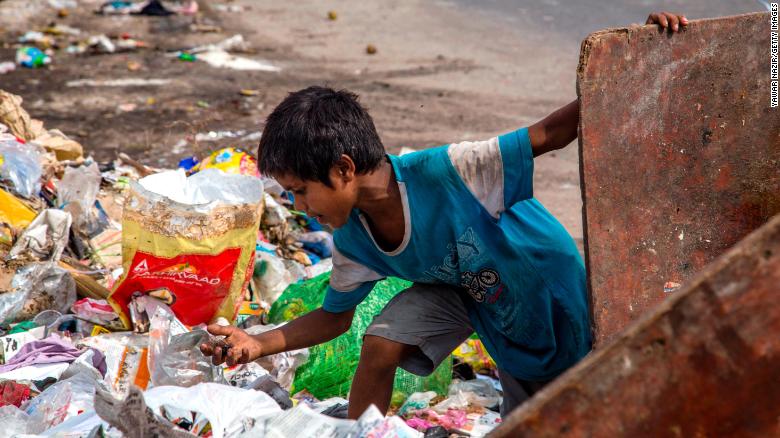
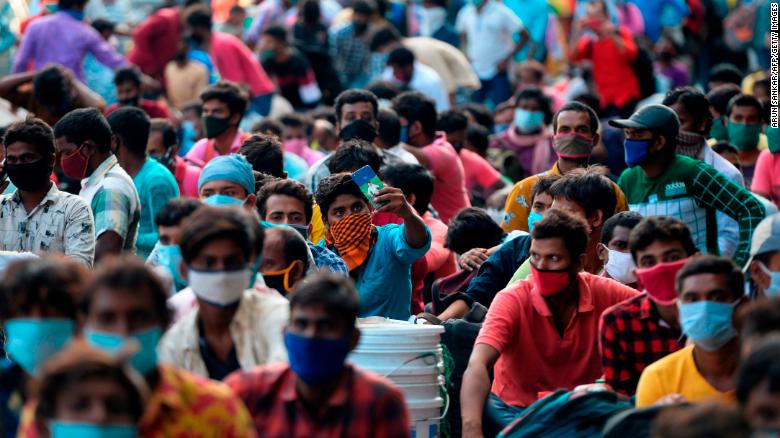
24-year-old who beat Covid-19 after nearly 80 days in the hospital says she regrets not wearing a mask Castillo went to the emergency room April 27 with difficulty breathing, a cough and a fever. The hospital said she had been exhibiting symptoms for six days prior to going to the ER and that she was placed on a ventilator during her first 24 hours there. ....... "Maybe if I would have just listened and worn a mask, just a simple thing, I would have avoided all this," she told KTVT. "I work at a bank, I'm always around people, but I was like, 'I'm fine, I'm fine.' Never did I think I'd catch it."
India to resume international flights, confirms air corridors with US, France, Germany "All these tickets are being sold on a one-way basis," he said. "So, it is not normal commercial operations."
Coronavirus symptoms fall into six different groupings, study finds Exclusive: Findings could give medics advance warning for hospital care and respiratory support ....... “Anything you can do earlier to stop people coming in half-dead is going to increase the chance of survival and also stop clogging up hospital beds unnecessarily” .......... six different groupings based on the type of symptoms, when they occurred, and their duration within the first 14 days of participants’ sickness. ......... headaches, and loss of smell and taste, which cropped up in all clusters, but the latter was longer lasting in milder cases. ....... tracking symptoms improves the ability to predict the trajectory of a Covid-19 patient.
The world falls apart as the US withdraws An administration that cannot govern makes a stark contrast with China ........ Covid-19 has not transformed the world, at least so far. But it has accelerated its development, technologically, socially and politically. ......... The west has valuable assets in any competition for influence with China. Many still admire its core values of freedom and democracy. Western cultural and intellectual influence remains far greater than that of China. ....... The US has been able to create and sustain long-lived alliances of like-minded countries. If one adds together the nations that naturally align with the US, including those of Europe, Japan, South Korea, Canada, Australasia and, increasingly, India, their economic and political weight remains huge. ......... Mr Trump’s is a post-values US. It is also post-competence. ....... if the state does not work, nothing does. The Trump administration appears determined to prove this hypothesis. ....... An alliance of liberal democracies dedicated to creating a counterweight to China in some areas, while co-operating successfully with it in others, is conceivable. But it will not happen if the US does not recreate itself as a functioning state led by a president who does not admire every authoritarian he meets. ......... Yet modern China has weak foundations, too. ........ Some people seem to believe that artificial intelligence and the reaping of vast quantities of data will allow central planning to replace the market. Nothing is less likely. The driving force of change is the ideas inside people’s heads. No one can plan for that. People need the incentives to create new and challenging things. Will today’s more oppressive Chinese state nurture that? ......... On the one side, then, we have a rising despotic superpower, but one with real frailties. On the other, we have an incumbent superpower that has lost its way. .......... The problem is not so much Mr Trump as that so many Americans want him to lead them. The western crisis is a crisis of values. We can overcome it. But it will be hard.
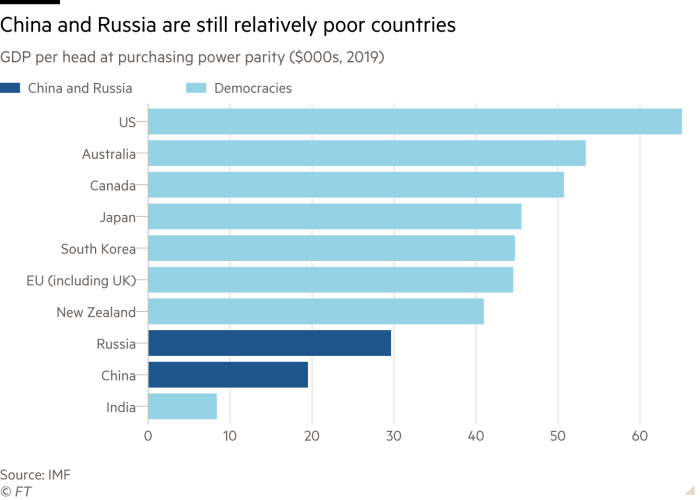

US and China: edging towards a new type of cold war? Trust between the countries has deteriorated during the pandemic and is close to its lowest point since 1979 ........ Chinese historical figures who supported democratic ideals and helped in the 1940s to write the Universal Declaration of Human Rights, which remains a bedrock for liberal values today. ........... Facing historic job losses and behind in the polls, US president Donald Trump has moved to blame China for his administration’s struggles in responding to coronavirus. ......... “This is worse than Pearl Harbor. This is worse than the World Trade Center. There’s never been an attack like this,” Mr Trump said of the pandemic this week. “It could have been stopped in China. It should have been stopped right at the source, and it wasn’t.” He has claimed that the virus came from a Wuhan lab. ........ The announcement on Thursday that trade talks between the two countries were still on track was also a reminder that the substance of superpower relations can often differ from the rhetoric. ........ While this new era of geopolitical rivalry may differ in important respects from the US-Soviet Union tensions between 1947 and 1991, irreconcilable differences in political values and strategic ambitions are eviscerating trust. ....... “The level of trust between China and the US is at its lowest point since diplomatic ties were first established in 1979” ........... Military conflict was not likely and ties could still be repaired if wise actions were taken. “But the risk is that the boom years of globalisation will be over and we might see the global system breaking into two parts,” he says. “That would greatly slow down global growth and developing countries would have to side with one of the two camps.” ....... “The root cause [in deteriorating relations] is the fundamental difference in ideology between the US and China,” he argues. “Between 1978 and 2012, the Communist party put aside its communist roots and focused on developing economic strength. Once China succeeded economically, the CCP went back to refocus on its original intentions [of building socialism].” ......... China’s ties with the US for most of the past 40 years have been founded on an inherently unstable equation. Each side was willing to play down ideological differences and strategic tensions in order to benefit from economic co-operation. For decades, this bargain delivered impressive commercial gains; China’s annual gross domestic product expansion has averaged just over 9 per cent since 1989, making it the prime locomotive for global growth............ the rounding up of the US spy network in China starting in 2010 ... At least 30 spies are reported to have been executed in the sweep, leaving US officials “shell shocked” by the accuracy of Chinese counter-intelligence. ............ Many in Beijing blame the tensions on the insecurities of a superpower in decline: in Washington, they fear the overconfidence of a great power on the rise. ....... total Chinese investment into the US fell to $5bn last year, down from a recent peak of $45bn in 2016, when Chinese companies were much more free to acquire US counterparts. ........ pressure from American companies — particularly in industries such as semiconductors that depend on Chinese demand — will not allow anything close to a complete “decoupling” of supply chains.

Late Soviet America Like the Soviet Union in its final years, the United States is reeling from catastrophic failures of leadership and long-suppressed socioeconomic tensions that have finally boiled over. For the rest of the world, the most important development is that the hegemony of the US dollar may finally be coming to an end. .......... the president is deeply incompetent and “stunningly uninformed.” If it wasn’t obvious already, the whole world now knows that the US lacks any strategic orientation or coherent executive leadership. .......... like statues of Lenin during the collapse of the Soviet empire, statues of Confederate leaders are being toppled just about everywhere. ............ The Soviet Union had a large, complicated planning and resource-allocation apparatus that attracted the society’s best-educated people, only to consign them to unproductive and frequently destructive tasks. The US has Wall Street. ........... Under President Donald Trump, America has become an international embarrassment. ....... Harold James is Professor of History and International Affairs at Princeton University

Fauci Live with Zuck
WHO ने 'हवा से कोरोना वायरस फैलने' के सबूतों को स्वीकार कियाThe US is diving into a dark Covid hole -- and there's no plan to get out the coronavirus task force does not hold daily briefings, and when it does, they are an exercise in dodging difficult questions and self-congratulation. ........... Months into the worst domestic crisis since World War II, there is no sense that a fractured country is pulling together to confront a common enemy. People are still arguing about wearing masks -- a tiny infringement of personal freedoms that represents one of the few hopes of easing the contagion. The one federal official who does seem to have answers, Dr. Anthony Fauci, has been banished to the podcast circuit by President Donald Trump, who was on Fox News Thursday night boasting about acing a cognitive test as the US hit another daily record of infections -- over 60,000 -- on a day on which more than 900 new deaths were reported. ............. It's unimaginable that any other modern President would have handled things this way. .......... Belated attempts to halt the virus in southern and western states are being hampered by feuds between Democratic mayors who want mask mandates and Republican governors handcuffed by ideology. .......... It took the US 99 days to reach one million cases, 43 days to get to 2 million and 28 days to add another million. That's a horrific rate of increase. .......... The massive disconnects between federal and state and local officials are making President George W. Bush's Hurricane Katrina disaster look like a trifle. ......... Trump's top aides bristle at any criticism, reflecting how lionizing a President who has navigated states of denial, ignorance, indifference and negligence about the virus is more important than looking reality in the eye. ........ In parts of the country -- in New York, New Jersey and Massachusetts for instance -- there is some hope that after proper mitigation efforts and a tight hand on the reopening tap the virus can be kept at low levels, at least until a feared winter outbreak. Republican governors in Ohio and Maryland who heeded epidemiology suppressed vicious epidemics. In states and cities where trusted leaders give simple, honest messages, progress is possible. ........... Early shutdowns, social distancing, the use of masks and prudent opening plans have helped lower new infections to manageable levels from New York City to Italy. Aggressive testing and tracing operations have kept a lid on the pandemic in South Korea and allowed officials in Singapore and Germany to quickly snuff out hotspots. ............. Only firm national leadership can plot a route out of the crisis and help states currently heading into the hot zone join those who have suppressed the virus
Masks offer much more protection against coronavirus than many think"Lord Ram Was Nepali, Not Indian":
Nepal Prime Minister KP Sharma Oli Speaking at a cultural programme at his residence, Mr Oli also accused India of cultural oppression and encroachment

Merck CEO Frazier says COVID-19 vaccine hype a 'grave disservice' to the public Politicians, government officials and pharma executives alike have been predicting a COVID-19 vaccine debut by year's end, but Merck CEO Kenneth Frazier doubts that's possible—and Merck has enough vaccine experience to know the obstacles ahead. ......... those who are promising vaccines later this year could be hurting the overall fight against the pandemic, Frazier figures. .......... There are massive scientific and logistical obstacles to achieving such a feat ............ “Ultimately, if you are going to use a vaccine in billions of people, you’d better know what that vaccine does.” ......... Merck won approval for its mumps vaccine after four years of research and development, a record, and it took five and a half years to score an approval for Merck’s Ebola vaccine. .......... In the last 25 years, pharma companies worldwide have developed seven “truly new” vaccines, Frazier said, and Merck was responsible for four of them. Scientists have been working on an HIV vaccine for decades to no avail ............... By talking up near-term vaccines, Frazier argues officials are enabling the public to ignore common-sense measures to slow the spread of COVID-19, such as wearing a mask. ............ aside from the scientific obstacles, manufacturing and distribution remain an even bigger challenge .......... “no matter where you are in the world, you should have access to this vaccine.” He cited an era of "ultra nationalism" as one obstacle to a launch, saying countries are more interested in securing supplies for their own populations than in prioritizing vaccines for people around the world who need them most. .............. Moderna, Pfizer, AstraZeneca and Johnson & Johnson are among the current COVID-19 vaccine front-runners.

